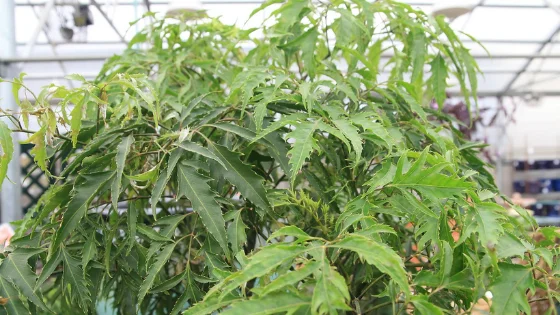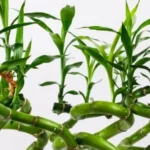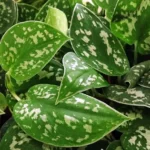Table of Contents
How to Nurture a Ming Aralia
The Ming Aralia is a stunning plant found in India and Polynesia. Although it is indigenous to a tropical climate it can be grown as an indoor plant in any climate. The plant is classified as an evergreen.
While it grows slowly, it and can reach up to 6 feet tall when properly cared for. While ming aralia is a flexible house plant that can be grown year-round maintaining proper indoor conditions is essential to keeping it happy and flourishing.
Creating a Tropical Haven
The most important factor in successfully growing a ming aralia is to imitate its native tropical environment as closely as possible.
The biggest differences between the ming aralia’s native climate and other parts of the world where it may be kept as a house plant are temperature, humidity, and light.
Temperature Requirements
Temperatures in the ming aralia’s tropical home can range widely, but don’t typically go over 100 degrees Fahrenheit or dip much below 65 degrees.
If the room temperature goes below 65 degrees the plant will become unhealthy and start shedding its leaves. If the leaves start to fall, it is a sign that the plant is dying.
If keeping a temperature of at least 65 degrees Fahrenheit is a problem, a small space heater can be used to provide additional heat to the bottom of the pot it is in.
Humidity Requirements
The humidity in the ming aralia’s indigenous climates ranges from 80% up to 90%. The ming aralia can do well in significantly lower humidity environments, but watch for brown, crispy leaves and general wilting as these are signs that the plant needs more moisture.
If it seems like the plant needs more humidity, there are several ways to increase local humidity around the plant to keep it growing well.
Pebble trays, a small humidifier set near the plant, and misting it regularly can all help keep the environment humid enough for the ming aralia to grow and thrive.
Light Requirements
The ming aralia needs plenty of light but does not do well in direct sunlight. It will do best in an area that gets morning light, or filtered light throughout the day.
If those are not options, the plant can do well in North-facing windows as well. Keep tabs on the plant and look for scorched leaves and other signs that the plant is getting too much direct light.
Planting
To grow a ming aralia it’s important to get it off to a good start and plant it right. There are several factors that go into proper planting to give the plant the best chance to grow well.
Soil Requirements
Good drainage is the highest priority for the ming aralia. The roots are very thin and are prone to rotting, so drainage is key. It is best to use something that aerates the soil such as perlite or vermiculite in combination with the potting soil.
Almost any type of potting soil will work, but using something with a natural base, such as pine bark, or peat moss, will give the plant the best combination of drainage and nutrients.
How to Fertilize
If there is fertilizer already in the potting soil, then there is no need to fertilize. If an added fertilizer is needed, use a liquid fertilizer. Only use it two to three times a year.
it is important to use during the ming aralia’s natural growth cycle which occurs between the beginning of spring and the end of fall.
How to Water
Because it is a tropical plant, the ming aralia likes soil that is consistently damp. It is best to make sure that the soil is well saturated. allow the extra water to drain out of the bottom of the pot into a draining dish, or the pebble tray if one is in use.
Allow soil to dry out until it is only slightly damp before watering again. During its growing cycle, it is good to water the ming aralia once a week.
In the winter months, watering may be reduced to once every other week. Monitor the soil to be sure that it never drys out completely.
Long-Term Care
To keep the ming aralia growing strong, it is prudent to make sure to have all the information necessary to keep it healthy. Knowing how to care for it in the long term will ensure that it can be enjoyed for many years.
Pruning
The most important thing to remember about pruning the ming aralia is that it is best to prune in the winter months when the plant is not in its growth cycle. Trimming in the warmer months can result in stunted growth and withering.
The plant does require at least light pruning to keep it growing well. There are many possibilities when it comes to shaping the ming aralia.
Because of the dense foliage of the plant, it is possible to inspire fast branching by only trimming the tips of the tree. This will create a spreading look. It is also possible to curate the ming aralia as a bonsai.
This type of pruning is work-intensive and requires research and thought, but can have therapeutic benefits.
Propagation
if propagation is desired, there are several routes that can be taken. The ming aralia does produce seeds in the spring and it is possible to grow a new plant from those.
Taking stem tips or trimmings should be done only in the summer. If propagating from root cuttings do so early in the fall. Cut strips from the base of the tree in four to six-inch strips.
Extra tips for Ming Aralia Care
Pests & Diseases
The Ming Aralia tend to have very few issues. Common pests such as aphids and spider mites can be issues but only occur rarely when the plant is grown indoors.
Most other issues such as yellowing, shedding, or brown and crispy leaves are usually signs that the environment needs to be adjusted.
Changing the humidity, adding nutrients to the soil, or adjusting the amount of sunlight may be necessary.
Photo by David J. Stang, CC BY-SA 4.0, via Wikimedia Commons



